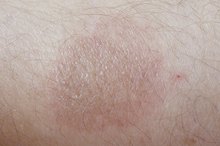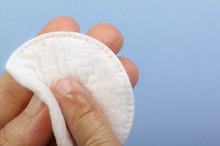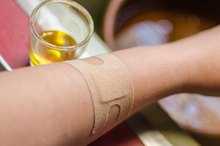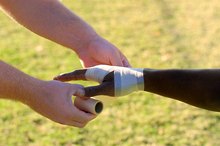What does fact checked mean?
At Healthfully, we strive to deliver objective content that is accurate and up-to-date. Our team periodically reviews articles in order to ensure content quality. The sources cited below consist of evidence from peer-reviewed journals, prominent medical organizations, academic associations, and government data.
The information contained on this site is for informational purposes only, and should not be used as a substitute for the advice of a professional health care provider. Please check with the appropriate physician regarding health questions and concerns. Although we strive to deliver accurate and up-to-date information, no guarantee to that effect is made.
How to Prevent a Burn From Leaving a Scar
Burns cause damage to the surface of your skin. A first degree burn typically produces redness and heals on its own. A second degree burn produces blisters and can cause scarring. A third degree burn destroys layers of skin and can cause extensive scarring and keloid formation. By properly caring for your burn, you can help prevent scarring.
Run the burn under cool but not cold water, for at least 10 to 15 minutes immediately after the burn occurs. Burns can continue to damage the skin unless you cool the burn immediately. It's important to note that you use cool water, never ice-cold water which can cause further nerve damage. Submerge the burn in cool water or apply a compress, but never apply ice, according to the Mayo Clinic.
How to Treat a Rug Burn
Learn More
Assess the burn to see what type of burn it is, suggests Dr. William Sears, Associate Clinical Professor of Pediatrics at the University of California, Irvine, School of Medicine. A first degree burn almost never causes scarring, since it only heats the surface of the skin. A second degree burn can be treated at home, and may cause scarring if treated improperly. A third degree burn will likely lead to scarring, and needs immediate medical attention. Call emergency services if you notice charred flesh and open wounds. The faster you receive medical care, the quicker you can get treatment and reduce your chances for scarring.
Read more about rubbing alcohol as a treatment for burns.
Wear pressure garments to help stop the formation of scars, suggests the Merck Manual. Dressings place pressure directly onto the burn and can stop scarring. Never wear pressure garments or bulky dressings without the direct supervision of your doctor -- they may not be appropriate for all types of burns and burn locations.
How to Prevent Scarring From a Steam Burn
Learn More
Keep burns clean and dry, and avoid touching them as much as possible. Picking at or popping burn blisters not only slows the healing process and puts you at risk for scarring, but it also introduces bacteria and germs into the open surfaces in your skin -- which puts you at risk for infection and further treatment and scarring.
Talk to your doctor about using massage to help combat scarring, suggests the University of Maryland Medical Center 3. Massage therapy can help smooth out the thickened skin that cause scarring, but it's not an appropriate therapy for all types of burns. Massage can also help decrease scarring after scars have already developed, but should only be done through a rehabilitative massage therapist.
Related Articles
References
- MayoClinic.com: Burns
- AskDrSears.com: Burns
- University of Maryland Medical Center: Burns
- Bleasdale B, Finnegan S, Murray K, Kelly S, Percival SL. The use of silicone adhesives for scar reduction. Adv Wound Care (New Rochelle). 2015;4(7):422-430. doi:10.1089/wound.2015.0625
- Cho YS, Jeon JH, Hong A, et al. The effect of burn rehabilitation massage therapy on hypertrophic scar after burn: a randomized controlled trial. Burns. 2014;40(8):1513-20. doi:10.1016/j.burns.2014.02.005
- Atiyeh BS, El khatib AM, Dibo SA. Pressure garment therapy (PGT) of burn scars: evidence-based efficacy. Ann Burns Fire Disasters. 2013;26(4):205-12.
- Ai JW, Liu JT, Pei SD, et al. The effectiveness of pressure therapy (15-25 mmHg) for hypertrophic burn scars: A systematic review and meta-analysis. Sci Rep. 2017;7:40185. doi:10.1038/srep40185
- John Hopkins Medicine. What is a scar?
- Phoenix Society for Burn Survivors. Laser treatment for burn scars: a practical guide. July 24, 2017.
- Willows BM, Ilyas M, Sharma A. Laser in the management of burn scars. Burns. 2017;43(7):1379-1389. doi:10.1016/j.burns.2017.07.001
- Hayashida K, Akita S. Surgical treatment algorithms for post-burn contractures. Burns Trauma. 2017;5:9. doi:10.1186/s41038-017-0074-z
- Shimizu R, Kishi K. Skin graft. Plast Surg Int. 2012;2012:563493. doi:10.1155/2012/563493
- Arno AI, Gauglitz GG, Barret JP, Jeschke MG. Up-to-date approach to manage keloids and hypertrophic scars: a useful guide. Burns. 2014;40(7):1255-66. doi:10.1016/j.burns.2014.02.011
- Quinn K. Silicone gel in scar treatment. Burns. 1987;13:S33-S40. doi:10.1016/0305-4179(87)90091-x
- Unal M. The Therapeutic Effects Of Conservative Treatments On Burn Scars. 1st ed. Faculty of Medicine, Department of Dermatology and Venereology, Selcuk University, Konya, Turkey; 68-69.
Writer Bio
Kay Ireland specializes in health, fitness and lifestyle topics. She is a support worker in the neonatal intensive care and antepartum units of her local hospital and recently became a certified group fitness instructor.









